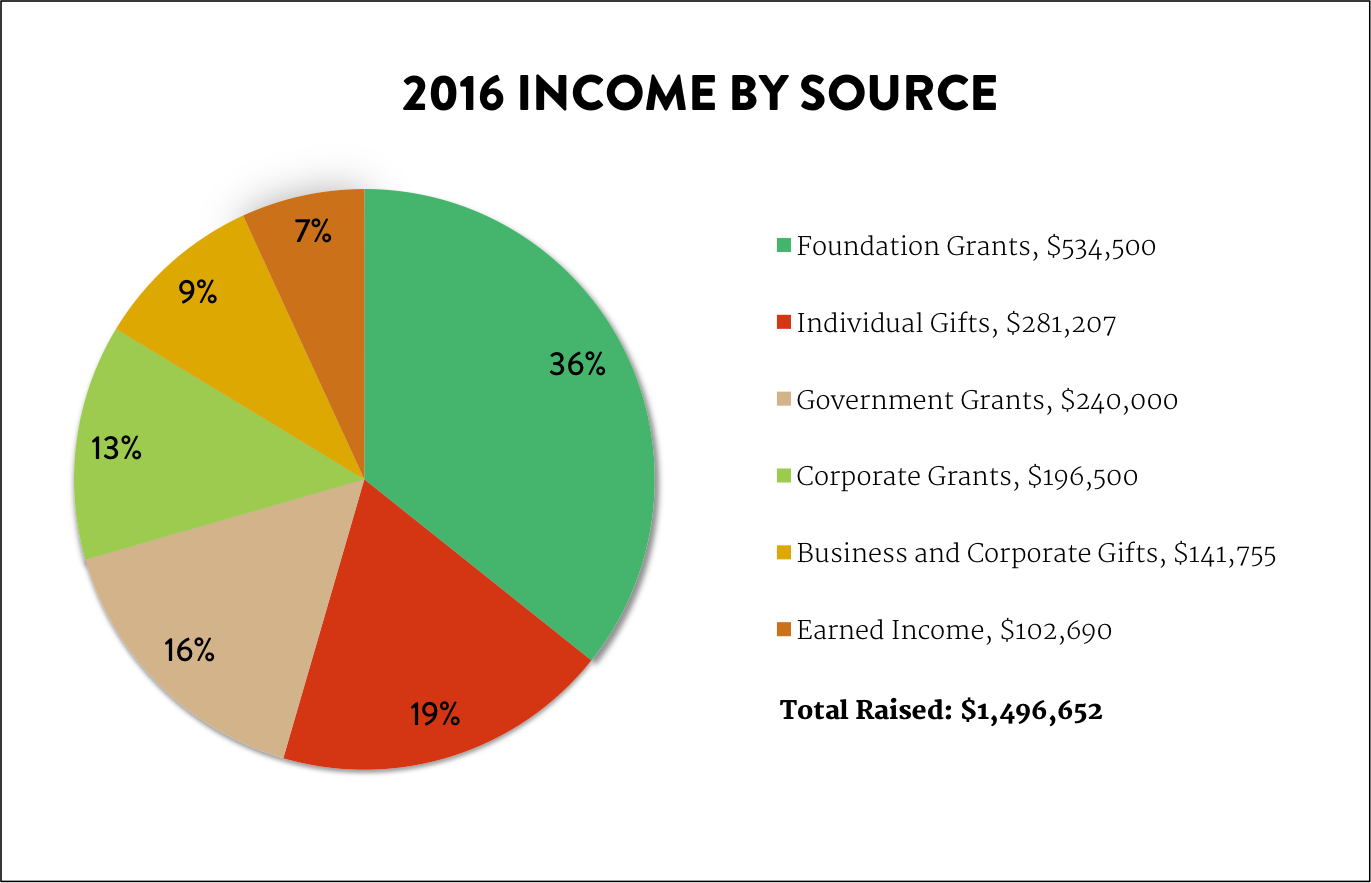Summary
Growing Home believes that everyone deserves a good job, and everyone deserves to eat well. Through its nonprofit social enterprise, Growing Home uses urban agriculture to meet both needs. The organization provides job training to adults with employment barriers on its two USDA-certified organic farms in the Englewood neighborhood of Chicago. Harvested produce is then sold to wholesalers and customers of farmers’ markets around Chicago, with all revenues reinvested in Growing Home’s job training program.

Employment provides individuals with a source of income and a sense of purpose. However, securing a stable job can become an impossible feat for many people experiencing employment barriers.
In Chicago, citywide unemployment is currently at 5.8 percent. What this average fails to capture is the vast range of unemployment rates throughout the city’s neighborhoods. According to the most recent U.S. Census data, employment rates are as high as six times the city average in some communities in Chicago’s south and west sides. The residents of these areas are predominately low-income and African-American.
Growing Home helps Chicagoans from these communities overcome employment barriers and reenter the workforce by empowering them with the skills, connections, and confidence to find and keep good jobs. The secret to its success lies in an unlikely innovation: paid job training through organic agriculture.
Community Need
Growing Home’s workforce development program takes place on its two USDA-certified organic urban farms located in Chicago’s South Side neighborhood of Englewood.
Englewood was once a thriving and diverse neighborhood, home to a booming railroad line and busy shopping centers. After the closure of local industries and forced demographic changes, the community suffered greatly from disinvestment and is now plagued by job scarcity, gang violence, and shuttered buildings.
Today, nearly half of Englewood’s residents live below the poverty line and more than one in five is unemployed. The median household income is $23,100 and nearly half of its residents rely on SNAP benefits. Only 44 percent of working-age men in Englewood are employed – the lowest rate in all of Chicago’s 77 neighborhoods.
In Englewood, 95 percent of residents are African-American. A recent report from the Brookings Institution shows that Chicago has the highest racial disparity and employment rates in the nation. 53 percent of black residents ages 20 to 24 are unemployed, compared to 27 percent of white residents of the same age group.
Together, unemployment and racial discrimination contribute to the cycle of poverty experienced by Englewood residents, which can lead to increased rates of committing a crime and incarceration. In turn, crimes and incarceration threaten community safety and family unity respectively, further fueling the cycle of poverty.
An Innovative Solution
Growing Home is changing this narrative by bringing employment opportunities to the Englewood neighborhood through organic agriculture. Growing Home believes that jobs create a path out of poverty and towards economic self-sufficiency. Employed and motivated individuals positively affect their families, neighbors, and communities, and help to restore safety and stability to communities affected by violence and disinvestment.
At its farms, Growing Home provides a 14-week paid transitional job for individuals with employment barriers like criminal records, housing insecurity, low education, and lack of formal work experience. Program participants are typically African-American and live far below the poverty line, with about one-third coming from within Englewood. Many carry a history of personal trauma, typically resulting from the violent deaths of loved ones, physical or emotional abuse, or sexual assault.
Growing Home’s work in job training and farming extends back 15 years, and was first conceived by its founder Les Brown. Les wrote, “People without jobs are often without roots. Our organic farming program is a way for them to connect with nature -- to plant and nurture roots over a period. When you get involved in taking responsibility for caring for something, creating an environment that produces growth, then it helps you build self-esteem and feel more connected.”
Farming provides a unique and effective context for program participants to learn, heal, and ultimately thrive. Participants report that being outside and interacting with the rhythms of nature are both inspiring and grounding. Latoya, a 2014 graduate, shared, “When I touch the soil I’m more peaceful. It’s like I’m in a totally different world. I’m still in Chicago, but my mind goes elsewhere because there is something about the soil that’s just calming.”
Not only do farms provide spaces to reflect and restore, but they also provide a continual source of rigorous work, which creates a demanding job experience. Growing Home harvests over 35,000 pounds of organic produce annually on just under an acre of land, whereas many of its market competitors require double the amount land to achieve similar yields.
Sustaining this level of agricultural productivity requires labor. When participants are enrolled in Growing Home’s job training program, they are hired as Production Assistants (PAs). Each morning PAs engage in farm work by planting, weeding, harvesting, packaging, and performing a variety of other agricultural tasks. This work involves both great rigor and care as participants cultivate thousands of pounds of produce from seed to sale. Farm staff focuses their instruction on transferable skills like quality control, effective communication, teamwork, and efficiency. The instruction given on the ground is then enforced in the classroom where participants benefit from a unique curriculum that addresses both hard and soft skills.
On weekends, PAs can practice their product knowledge, customer service skills, and cash handling abilities at Growing Home’s farmers market stands. There, Growing Home sells its organic produce to local customers, restaurants, and wholesalers at premium prices. Over the past several years, sales have steadily increased as recognition for Growing Home’s produce quality and social mission has spread. All income from produce sales is reinvested into the nonprofit’s operating budget, and helps to fund job training activities.
As a transitional job program Growing Home is not required to compensate its PAs, but it is committed to doing so nonetheless. Providing a paid experience has had a positive impact on PA retention, program efficacy, and job placement rates. By framing its program as a real job and not a mere learning experience, Growing Home increases accountability and efforts among its PAs. Moreover, PAs aren’t forced to make the choice between immediate income and future opportunity, and therefore are less likely to leave the program to return to low-paying, short-term employment.
Proven Results
Through its paid, farm-based job training program, Growing Home has created a highly successful workforce development model. Its thorough and individualized training has helped hundreds of job-seeking adults find and keep stable employment, while building the foundation for long-term success. In 2016, Growing Home trained 52 individuals and achieved an 81 percent program graduation rate, a 95 percent job placement rate, and a 95 percent 30-day job retention rate.
Program graduates typically find employment within Chicago’s burgeoning food industries. Growing Home partners with employers at urban growing facilities, wholesalers, grocers, and eateries, who demand hardworking employees that are well-versed in organic products. For example, many graduates go on to work at Local Foods Grocer and Distributor, where their familiarity with Midwestern heirloom produce varieties is an asset. Other graduates have found employment maintaining gardens for farm-to-table caterers, working at indoor hydroponic farms, and preparing food for sustainably-sourced restaurants.
Last year, Growing Home’s farms produced over 35,000 pounds of vegetables and herbs, with farm enterprise sales totaling $97,287. Growing Home uses earned income from farm sales to help sustain its programs, along with individual and corporate giving, and grants. Approximately seven percent of the organization’s total income comes from revenue generating activities like farm sales and tours.
As a nonprofit social enterprise, one of Growing Home’s challenges is to earn more income while adhering to its social mission. Currently, 20 percent of harvested produce is earmarked for customers in the Englewood community. This produce is offered at reduced-prices and sold at a loss. To continue offering affordable fresh food in Englewood while also increasing income, Growing Home is seeking more urban farmland and considering additional revenue streams. However, the organization maintains that philanthropic funding will always be necessary to support operations.

Harry Rhodes, Growing Home’s Executive Director, is also the founder and board president of Advocates for Urban Agriculture, an organization working to change policies around land use in Chicago. Fewer obstacles, he says, will make it easier for other community organizations to convert vacant lots into productive spaces.
Growing Home is distinct in its use of organic agriculture as a foundation for paid employment training. Now, what began as an unlikely pairing has flourished into a successful program that has the potential to be replicated throughout the country.
About the Author:
Maia Reed is the Development Associate at Growing Home, Inc, where she coordinates grants, individual giving, and events. She has broad experience in nonprofit fundraising, and has written extensively on food and agriculture issues. She hopes to continue exploring ways that farming can be used to provide social services while bridging the divide between nonprofits and businesses.
To learn more about Growing Home or to donate, please visit www.growinghomeinc.org.
References
1. Illinois Department of Employment Security, “Unemployment Rates for the State, Metro Areas, Counties and Cities,” (January 2017) accessed March 17, 2017, http://www.ides.illinois.gov/LMI/Local%20Area%20Unemployment%20Statistics%20LAUS/CurrentMonthlyUnemploymentRates/AllAreas.PDF
2. City of Chicago, “Census Data – Selected Socioeconomic Indicators in Chicago 2008-2012,” (August 2014) accessed March 17, 2017, https://data.cityofchicago.org/Health-Human-Services/Census-Data-Selected-socioeconomic-indicators-in-C/kn9c-c2s2
3. Statistical Atlas, “Overview of Englewood, Chicago, Illinois,” accessed March 17, 2017, http://statisticalatlas.com/neighborhood/Illinois/Chicago/Englewood/Overview
4. Statistical Atlas, “Overview of West Englewood, Chicago, Illinois,” accessed March 17, 2017, http://statisticalatlas.com/neighborhood/Illinois/Chicago/West-Englewood/Overview
5. Martha Ross and Nicole Prchal Svajlenka, “Employment and Disconnection Among Teens and Young Adults: The Role of Race. Place, and Education,” The Brookings Institution (May 2016), accessed March 17, 2017. https://www.brookings.edu/research/employment-and-disconnection-among-teens-and-young-adults-the-role-of-place-race-and-education/#V0G0.


